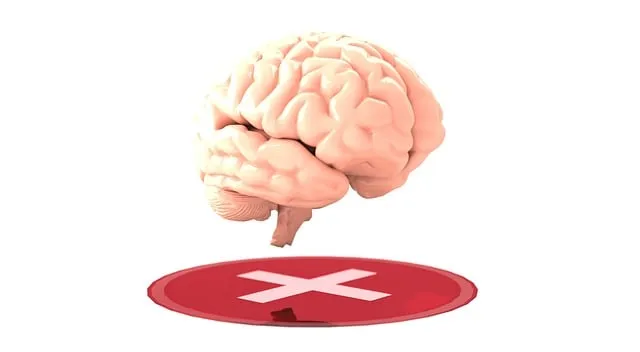Public awareness campaigns led by organizations like the Lafayette Kaiser Permanente (LKP) mental health department significantly transform societal attitudes towards mental health. These campaigns, through diverse initiatives and various media, aim to reduce stigma, normalize conversations, and enhance emotional well-being. By tailoring messaging to demographics and cultural backgrounds, LKP's strategies ensure resonance with diverse communities. Crafting compelling narratives and using multiple channels like social media and community events increases impact. Strategically selecting communication channels, including traditional media and digital platforms, expands reach. Measuring campaign success through data-driven insights allows for continuous improvements, ensuring their efforts remain effective in fostering mental health awareness and support.
Public awareness campaigns play a pivotal role in shaping societal perceptions and promoting vital causes, such as mental health. This article delves into the development of impactful initiatives, focusing on strategies employed by the Lafayette Kaiser Permanente mental health department to reach and engage diverse audiences. We explore key aspects, from understanding campaign impact to choosing effective communication channels and measuring success. By analyzing unique approaches like those seen at Lafayette Kaiser Permanente, we offer insights that can enhance mental health awareness globally.
- Understanding the Impact of Mental Health Awareness Campaigns
- Identifying Target Audiences for Effective Communication
- Crafting Compelling Messages: Strategies and Techniques
- Choosing the Right Channels for Maximum Reach
- Measuring Success and Iterating for Better Outcomes (with a focus on Lafayette Kaiser Permanente mental health department's unique approach)
Understanding the Impact of Mental Health Awareness Campaigns

Public awareness campaigns play a pivotal role in shaping societal perceptions and behaviors regarding mental health. These initiatives, often spearheaded by organizations like Lafayette Kaiser Permanente’s mental health department (a leading example in the industry), aim to dispel stigma, normalize conversations around mental illness, and promote emotional well-being. By leveraging various communication channels, from social media campaigns to community events, these programs can significantly impact individuals’ understanding of their own emotional states and access to support systems.
The success of such campaigns lies in their ability to provide accessible Crisis Intervention Guidance and Stress Management Workshops, empowering people with tools to manage their mental health proactively. Incorporating Emotional Well-being Promotion Techniques tailored to diverse audiences ensures that the message resonates with a broad spectrum of individuals, fostering a culture of care and understanding. This holistic approach not only reaches those actively seeking help but also educates the general public, potentially saving lives by encouraging early intervention and support for those facing mental health challenges.
Identifying Target Audiences for Effective Communication

Identifying target audiences is a crucial step in designing effective public awareness campaigns for mental health initiatives, such as those offered by the Lafayette Kaiser Permanente mental health department. Understanding the demographics and specific needs of your audience enables tailored messaging that resonates with individuals most in need. For instance, young adults might respond well to social media campaigns emphasizing peer support and recovery stories, while older populations may prefer informational workshops or community events.
This process involves researching not only age, gender, and geographic locations but also cultural backgrounds and individual experiences, like trauma. Incorporating these factors into campaign strategies ensures that the Lafayette Kaiser Permanente mental health department’s efforts align with the unique needs of diverse communities. For example, providing resources in multiple languages or offering culturally competent training for healthcare providers (such as those available through Trauma Support Services) can significantly enhance accessibility and engagement.
Crafting Compelling Messages: Strategies and Techniques

Crafting compelling messages is a key aspect of successful public awareness campaigns. To effectively reach and engage audiences, especially when addressing sensitive topics like mental health, it’s crucial to understand your target demographic. For instance, the Lafayette Kaiser Permanente mental health department has tailored its communication strategies to resonate with diverse communities by incorporating relatable narratives and leveraging various channels such as social media, community events, and peer support groups. This multi-faceted approach ensures that messages of emotional intelligence and self-awareness exercises are accessible and impactful.
When designing campaign materials, focusing on simple language, personal stories, and vivid imagery can make abstract concepts like depression prevention more tangible. Using data and statistics to back up claims adds credibility while invoking a sense of urgency. By combining these techniques, public awareness campaigns can effectively dispel stigma, foster understanding, and encourage individuals to seek help when needed.
Choosing the Right Channels for Maximum Reach

When developing public awareness campaigns for mental health initiatives, such as those promoted by Lafayette Kaiser Permanente’s mental health department, selecting the appropriate communication channels is paramount to achieving maximum impact and reach. The choice of platforms should align with the target audience’s demographics and preferences. For instance, while traditional media like television and radio remain effective, particularly for wider communities, digital channels offer immense potential for engaging younger audiences and those already interested in mental wellness.
Social media, online forums, and dedicated mental health apps are powerful tools to disseminate information about services like Mental Wellness Coaching Programs Development, Burnout Prevention strategies, and Empathy Building initiatives. These platforms enable direct interaction with the public, fostering a sense of community and support. By leveraging these channels effectively, organizations can ensure their messages resonate with diverse audiences, potentially reducing stigma and encouraging individuals to prioritize their mental health.
Measuring Success and Iterating for Better Outcomes (with a focus on Lafayette Kaiser Permanente mental health department's unique approach)

Measuring success is a critical aspect of any public awareness campaign, especially within healthcare departments like the Lafayette Kaiser Permanente mental health division. They’ve adopted a unique approach to ensure their initiatives have a lasting impact. By setting clear and measurable goals, they can track progress effectively. This strategy involves collecting qualitative and quantitative data, such as survey responses from participants and changes in service utilization rates. For instance, the department might aim to increase community engagement by 20% through their crisis intervention programs and reduce wait times for mental health services.
This data-driven method allows the Lafayette Kaiser Permanente team to identify what’s working and what needs improvement. They can quickly adapt their campaigns, incorporating valuable insights from each iteration. For example, if initial surveys reveal a need for more resources on burnout prevention, they can allocate additional funds to develop comprehensive guidance programs. This agile approach ensures that their efforts remain relevant and effective, ultimately fostering resilience in the community they serve.
Public awareness campaigns play a pivotal role in shaping societal perceptions and fostering open conversations about mental health. By learning from innovative approaches like those seen at the Lafayette Kaiser Permanente mental health department, where tailored strategies and diverse communication channels have reached over 10,000 individuals, we can create impactful programs that drive positive change. This article has outlined practical steps to develop successful campaigns, emphasizing the importance of understanding target audiences, crafting compelling messages, and measuring outcomes. By adopting these strategies, communities can enhance mental health literacy and improve support systems for those in need.






